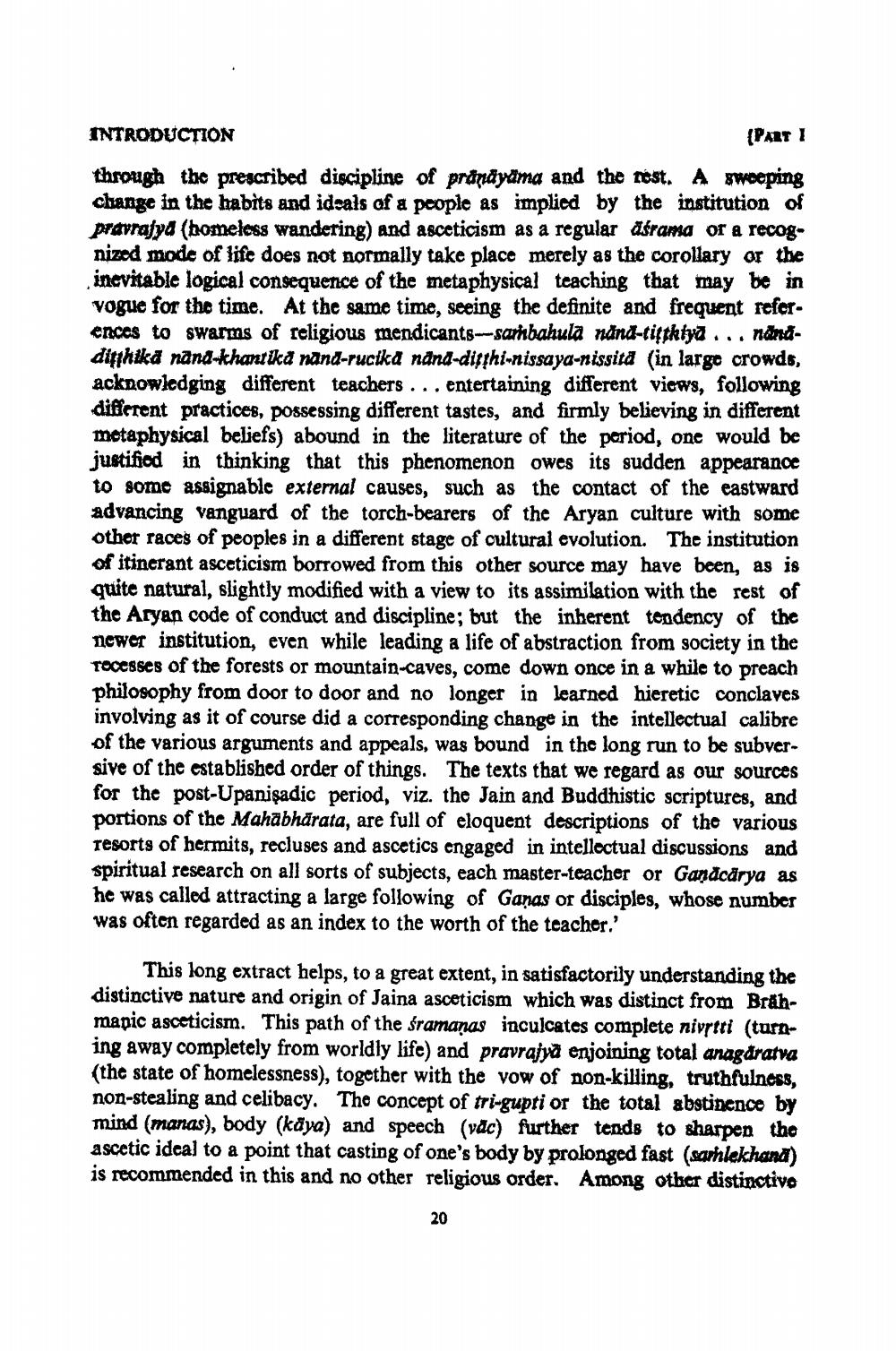________________
INTRODUCTION
(PATI
through the prescribed discipline of pranayama and the cost. A sweeping change in the habits and ideals of a people as implied by the institution of pravrajyd (bomeless wandering) and asceticism as a regular aśrama of a recognized mode of life does not normally take place merely as the corollary or the inevitable logical consequence of the metaphysical teaching that may be in vogue for the time. At the same time, seeing the definite and frequent references to swarms of religious mendicants--sarhbahula ndnd-ciftklyd ... nanddithika nana-thantika nand-rucika nånd-dinthi-nissaya-nissità (in large crowds, acknowledging different teachers ... entertaining different views, following different practices, possessing different tastes, and firmly believing in different metaphysical beliefs) abound in the literature of the period, one would be justified in thinking that this phenomenon owes its sudden appearance to some assignable external causes, such as the contact of the eastward advancing Vanguard of the torch-bearers of the Aryan culture with some other races of peoples in a different stage of cultural evolution. The institution of itinerant asceticism borrowed from this other source may have been, as is quite natural, slightly modified with a view to its assimilation with the rest of the Aryan code of conduct and discipline; but the inherent tendency of the newer institution, even while leading a life of abstraction from society in the Tocesses of the forests or mountain-caves, come down once in a while to preach philosophy from door to door and no longer in learned hieretic conclaves involving as it of course did a corresponding change in the intellectual calibre of the various arguments and appeals, was bound in the long run to be subversive of the established order of things. The texts that we regard as our sources for the post-Upanisadic period, viz. the Jain and Buddhistic scriptures, and portions of the Mahabharata, are full of eloquent descriptions of the various Tesorts of hermits, recluses and ascetics engaged in intelloctual discussions and spiritual research on all sorts of subjects, each master-teacher or Ganacarya as he was called attracting a large following of Ganas or disciples, whose number was often regarded as an index to the worth of the teacher.'
This long extract helps, to a great extent, in satisfactorily understanding the distinctive nature and origin of Jaina asceticism which was distinct from Brahmapic asceticism. This path of the śramanas inculcates complete nivstti (turning away completely from worldly life) and pravrajya enjoining total anagaratva (the state of homelessness), together with the vow of non-killing, truthfulness, non-stealing and celibacy. The concept of tri-gupti or the total abstinence by mind (manas), body (kaya) and speech (vac) further tends to sharpen the ascetic ideal to a point that casting of one's body by prolonged fast (samhlekhand) is recommended in this and no other religious order. Among other distinctivo
20




